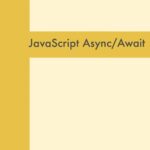Here’s a concise summary of the basics to advanced features in JavaScript
Basics of JavaScript:
- Variables and Data Types:
- Declare variables using
var,let, orconst. - Types include numbers, strings, booleans, objects, arrays, and more.
- Declare variables using
- Operators:
- Arithmetic, comparison, logical operators.
- Control Flow:
- Conditional statements (
if,else,switch). - Looping constructs (
for,while,do-while).
- Conditional statements (
- Functions:
- Define functions using
functionkeyword. - Parameters, return values, and function expressions.
- Define functions using
- Arrays:
- Ordered collections of values.
- Access elements by index.
- Objects:
- Unordered collections of key-value pairs.
- Use dot notation or bracket notation to access properties.
- Event Handling:
- Respond to user interactions using event listeners.
Intermediate JavaScript:
- Scope and Closures:
- Understand global and local scope.
- Closures capture and remember the lexical scope.
- Asynchronous JavaScript:
- Callbacks, Promises, and Async/Await for handling asynchronous operations.
setTimeoutandsetIntervalfor delays and intervals.
- DOM Manipulation:
- Access and manipulate the Document Object Model (DOM) to interact with HTML and CSS.
- Create, modify, or delete HTML elements dynamically.
- Error Handling:
- Use
try,catch, andfinallyblocks for error handling.
- Use
Advanced JavaScript:
- Prototypes and Prototypal Inheritance:
- JavaScript is prototype-based.
- Objects inherit properties and methods from prototypes.
- ES6+ Features:
- Arrow functions, template literals, destructuring assignments.
letandconstfor variable declarations.- Classes for object-oriented programming.
- Modules:
- Organize code into reusable and maintainable modules.
- Import and export functionalities.
- Fetch API and AJAX:
- Fetch data from APIs using the
fetchfunction. - Asynchronous JavaScript and XML (AJAX) for making asynchronous requests.
- Fetch data from APIs using the
- Web Storage:
localStorageandsessionStoragefor client-side data storage.
- Regular Expressions:
- Patterns for string matching and manipulation.
- Promises and Async/Await:
- Simplify asynchronous code and handle promises more elegantly.
- Web Workers:
- Enable concurrent execution of JavaScript code in the background.
- Functional Programming:
- Higher-order functions, map, filter, and reduce methods.
- Immutability and pure functions.
- Frameworks and Libraries:
- Explore popular JavaScript libraries and frameworks like React, Angular, or Vue.js for building modern web applications.
This summary provides a roadmap from the foundational concepts of JavaScript to more advanced and sophisticated features. Understanding these concepts equips you to write efficient, scalable, and maintainable JavaScript code for diverse web development scenarios.



